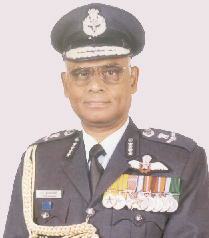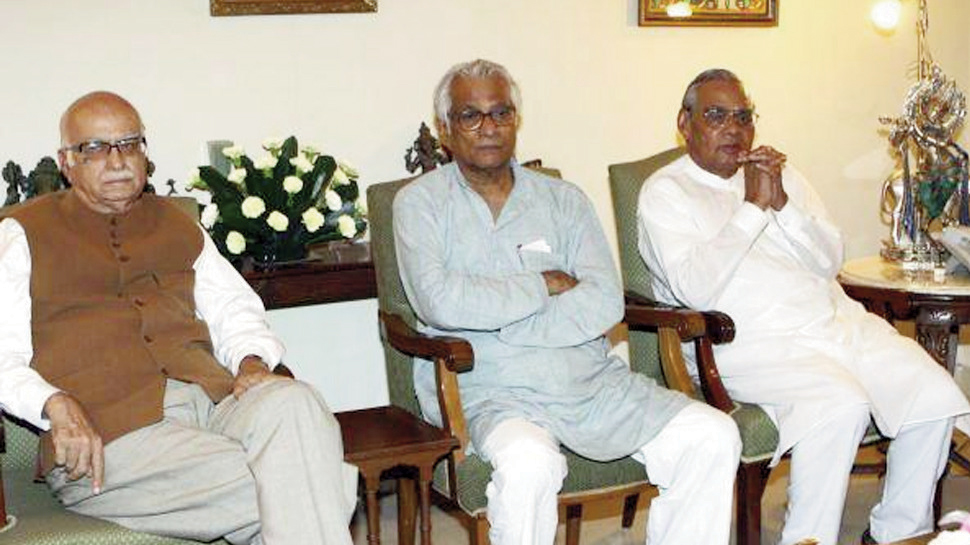
 |
REMEMBERING A GIANT FIGHTER
Good-bye, George Saheb !
“These friends (he identified some with their first name) talk something with me in my office and talk the opposite when they meet you (media)”, he said candidly, highlighting a malady - inability to take a public stand honestly - that has been afflicting trade union movement in the country. It is this trait of being straightforward made Purno A Sangma, the man from the Garo Hills who went on to become the Speaker of 11th Lok Sabha, catch the attention of eternal anti-Congress man with a sharp memory. George Saheb, as Fernandes was known amongst his friends and acolytes, was so impressed with Sangma that he wanted the first time Congress Parliamentarian (in 1977) to join the Morarji Desai –led Janata Party. “He flew in from Mumbai just to meet me. We spoke for long hours. He assured me a bright future (at the national level), but I was unwilling to leave the Congress”, Sangma told me years later when he had finally left the Congress to float the NCP with Maratha strongman Sharad Pawar in January 2013. And credited his success as Labour Minister in the P V Narasimha Rao government to the guidance he received from Fernandes. “You see, I do not have any trade union background. George Saheb did not want me to fail”. Sharad Yadav, who has his own Loktantrik Janata Dal (LJD), also has fond memories of George Saheb. He was the man who had inducted the engineering student from Jabalpur into politics. “George Saheb taught me the rough and tumble of politics. He was also instrumental in me getting a ticket, to contest my first election in 1974, resolutely p e r s u a d i n g J a y a p r a k a s h Narayan to hand me one”. TRADE UNION BAPTISM Born in Mangalore in a middle class family in 1930, George Mathew Fernandes had his trade union baptism in Bombay (Mumbai now), and entered political scene through the Bombay Municipal Corporation (BMC). By 1967 he became the giant killer by defeating as the Samyukta Socialist Party candidate, the Congress strongman of the city, S.K. Patil in Bombay South constituency. The railway strike he had organised seven years later in 1974 shook the Indira Gandhi regime. Massive crackdown and emergency followed in quick succession as also the joke “Where is the train? It is in AIR news”. Post-emergency, national politics changed. Fernandes acquired ‘Bihari roots’ with Muzaffarpur and Nalanda providing the props.Muzaffarpur rooted for him without seeing him in person as he was held behind the bars in the emergency era Baroda dynamite conspiracy case. A photograph of Fernandes, with his shock of unkempt hair, raising a handcuffed hand in defiance remains one of the most enduring images of the times.For people of Nalanda, he remains the ‘Jarje Saheb’ who gifted them an ordnance factory and a Sainik School. Significantly, Muzaffarpur rejected him in 2009 as he had lost his clout in the Janata family, and became an ‘independent’ warrior. After nine stints in the Lok Sabha as a man of action, he was elevated by his party to the Rajya Sabha as if to keep him occupied; the term lasted for one year from August 2009 to July 2010. REBEL, FIGHTER, PROTEST
There is an interesting aside to the Fernandes abode as the Krishna Menon Marg residence was known. At one time the Home Minister of the day, S B Chavan used to stay in the house across the road. Every time his convoy came out, the police rushed to Fernandes house demanding that the main gate be closed. An irritated Fernandes pulled down the gate itself. A bizarre protest? Well it was but Fernandes was like that. IDEOLOGICAL SOMURSAULTS
Fernandes lost some of his sheen, however,in Graham Staines murder case. He attributed the murder of Orissa based Christian missionary by a mob led by Bajrang Dal member Dara Singh to“an international conspiracy mounted by those who wanted the BJP government in power at the Centre, to go”. Fernandes can claim credit for ending the Lalu hegemony in Bihar during the 1990s. Lalu invited his wrath through words and deeds. Nitish Kumar and Abdul Ghafoor closed ranks with Fernandes to float yet another socialist amoeba, Samata party in 1994. A year later the Samata Party merged with Janata Dal (United). Nitish- Fernandes equation did not last long. Frail health made ‘George Saheb’ loose his aura, and become a loner in the party and personal life alike. Nitish replaced Fernandes as the national president of the party with Sharad Yadav. He also denied in 2009 JD –U ticket to Fernandes from Muzaffarpur By then Fernandes was not the same George Fernandes. He was not mentally alert and looked lost, according to many Biharis and JD-U leaders. That was my impression too when I met him in his study (at his Krishna Menon Marg residence) a couple of days after the Eelam War ended on May 18, 2009.His old-time ally and former Samta Party colleague Jaya Jaitly tried to gently help him but to no avail. -- Malladi Rama Rao
|
|


 George Fernandes
George Fernandes In 1989, when VP Singh, pictured above shaking hands with Farooq Abdullah, was sworn in as the prime minister, he chose Sayeed to be his home minister. Sayeed was the first Muslim to head the ministry
In 1989, when VP Singh, pictured above shaking hands with Farooq Abdullah, was sworn in as the prime minister, he chose Sayeed to be his home minister. Sayeed was the first Muslim to head the ministry S. Krishnaswamy
S. Krishnaswamy Lal Krishna Advani,George Fernandes and Atal Bihari Vajpayee.
Lal Krishna Advani,George Fernandes and Atal Bihari Vajpayee.